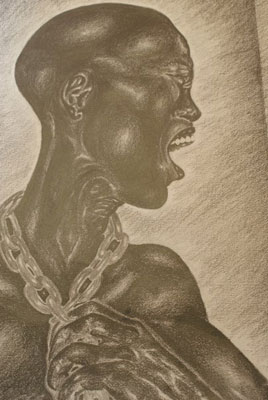All Nonfiction
- Bullying
- Books
- Academic
- Author Interviews
- Celebrity interviews
- College Articles
- College Essays
- Educator of the Year
- Heroes
- Interviews
- Memoir
- Personal Experience
- Sports
- Travel & Culture
All Opinions
- Bullying
- Current Events / Politics
- Discrimination
- Drugs / Alcohol / Smoking
- Entertainment / Celebrities
- Environment
- Love / Relationships
- Movies / Music / TV
- Pop Culture / Trends
- School / College
- Social Issues / Civics
- Spirituality / Religion
- Sports / Hobbies
All Hot Topics
- Bullying
- Community Service
- Environment
- Health
- Letters to the Editor
- Pride & Prejudice
- What Matters
- Back
Summer Guide
- Program Links
- Program Reviews
- Back
College Guide
- College Links
- College Reviews
- College Essays
- College Articles
- Back
Terrorism or Rationality?
The United States is divided by its citizen’s various opinions. Even in the 1800’s people still found things to argue about such as one’s social status or who had the better house. One of the biggest conflicts of the 1800’s though, was slavery. Over time the country became divided over the issue and eventually ended up as the North against the South. The South was for slavery while the North prohibited the idea. However, the difference between the two sides’ opinion wasn’t really put into action until 1856 when a man by the name of John Brown killed five settlers in Lawrence, Kansas.“Bleeding Kansas,” as the event was later called posed a major question; terrorism or rationality?
Unlike other abolitionists, John Brown took his view of slavery very seriously. Many Northerners agreed slavery was a horrible and inhumane thing, but were not willing to take action to fix the problem. Brown on the other hand found slavery absolutely revolting and was so set on abolishing it, he was willing to kill five random pro-slavery settlers. To anyone opposed to violence Brown’s actions were insane. Even those that believed in violence were perplexed at how anyone could commit such a horrible crime. And in truth it was. In his defense though, John Brown took action for his beliefs while other abolitionist sat as home and just talked about their distaste for slavery.
What Brown did was admittedly on the brink of insane, but also necessary in the process of abolishing slavery. Slavery was bad and many people understood that. John Brown did more than understand it though. He knew that in order to do anything about it he would have to do something drastic—drastic as murder perhaps. Killing those five settlers was a wakeup call to America. People soon understood that with slavery came consequences and those consequences could end in death. The message Brown sent around the country invoked both fear and respect. Respect from slaves and other abolitionists, and fear from slave owners. If the first five people had been random, who knew who was next?
It wasn’t long before Brown was caught and hanged. Even so his death didn’t end the abolition movement of slavery. If anything Brown’s death strengthened it. It proved slavery could bring out the worst in people. Southerners still refused to accept it as bad, but as said earlier, for many others “Bloody Kansas” was an awakening. People realized how lazy they had been throughout it and those that called themselves abolitionists were ashamed at their lack of action. Brown’s passion of abolishing slavery spread to many others and in the long run showed the truth of the horrors of slavery.
Had John Brown not done what he did, there’s no telling what would’ve happened. “Bloody Kansas” was a gruesome and dramatic event, but it also was a way of speeding the abolishment process up. Even after reading this many will still think Brown’s choice was an act of terrorism and will not hesitate to explain why. Others however, will think what John Brown did was an act of courage and a way to express his detestation of slavery. As violent as the act was though, it brought about a change for the better that would have never occurred without five murders by one man in a rage about his beliefs.

Similar Articles
JOIN THE DISCUSSION
This article has 0 comments.
